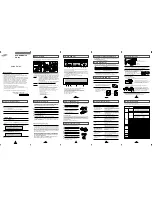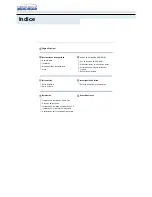
Message Formats 2-10
Write Multiple Registers – Function Code 10H
The Write Multiple Register function allows the writing of data to from one to sixteen consecutive registers.
►
Write Multiple Registers Command Message
Table 2.11 - Write Command Message
Description
Data
Slave Address
01h
Function Code
10h
Starting Register
Upper
00h
Lower
01h
Quantity
Upper
00h
Lower
02h
Number of Data Bytes
04h
First Register Data
Upper
00h
Lower
01h
Next Register Data
Upper
02h
Lower
58h
CRC-16
Upper
63h
Lower
39h
Each E7 drive slave address is set via. parameter H5-01. Valid slave addresses must be in the range of 1 to 20 hex (1 to 32 dec) and entered as a
hexadecimal number. No two slaves may have the same address. The master addresses the slave by placing the slave address in the Slave
Address field of the message. In the command message above, the slave is addressed at 01h. Broadcast address 0 is valid for register write
commands.
By setting the slave address to zero (0) in the command message, the master can send a message to all the slaves on the network simultaneously.
This is called simultaneous broadcasting. In a simultaneous broadcast message there is no response message.
The function code of this message is 10h (write multiple registers).
The starting register is the address of the first register to be written. In the command message above the starting register address is 01h (0001h).
The quantity indicates how many consecutive registers are to be written. The quantity may range from 1 to 16 registers. If an invalid quantity is
entered, error code of 03h is returned in a fault response message. In this command message there are two consecutive registers to be written:
01h (Operation Command) and 02h (Frequency Reference).
The Number Of Data Bytes is the number of bytes of data to be written. The Number Of Data Bytes is actually the quantity multiplied by 2,
since there are two bytes of data in each register.
The data section contains the data for each register to be that written in the order in which they are to be written.
A CRC-16 value is generated from a calculation including the message slave address, function code, starting register, quantity, number of data
bytes and all register data. The procedure for calculating a CRC-16 is described at the end of this chapter. When the slave receives the command
message it calculates a CRC-16 value and compares it to the CRC-16 of the command message. If the two CRC-16 values are identical and the
slave address is correct, the slave processes command message. If the two CRC-16 values are not identical, the slave will discard the command
message and not respond.
If the command message has a valid slave address, function code, starting register, quantity, number of data bytes and data, the slave will
respond with a normal response message. If the command message has an invalid function code, starting register, quantity, number of data bytes
and/or data, the slave will respond with a fault response message. If the command message has an invalid slave address or CRC-16, no response
will be returned.
Содержание CIMR-E7U Series
Страница 1: ...E7 Drive Parameter Access Technical Manual Drive Models CIMR E7U Document Number TM E7 11...
Страница 2: ......
Страница 6: ...iv This page intentionally left blank...
Страница 8: ...Connections 1 2 This page intentionally left blank...
Страница 10: ...Connections 1 4 This page intentionally left blank...
Страница 19: ...Connections 1 13 This page intentionally left blank...
Страница 21: ...Message Formats 2 2 This page intentionally left blank...
Страница 35: ...Troubleshooting 3 2 This page intentionally left blank...
Страница 43: ...Troubleshooting 3 10 This page intentionally left blank...
Страница 45: ...E7 Drive Parameters 4 2 This page intentionally left blank...
Страница 71: ...E7 Drive Parameters 4 28 This page intentionally left blank...
Страница 73: ...User Notes 5 3 This page intentionally left blank...
Страница 81: ...User Notes 5 11 Notes Enter the current application parameter data and any relevant notes...
















































